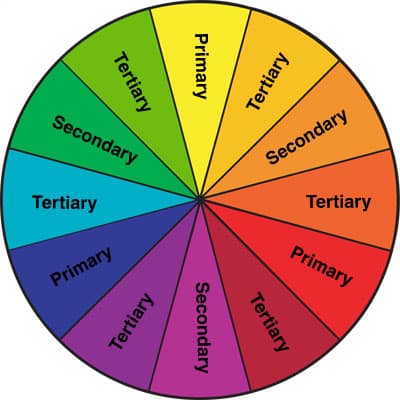Does Adding Black Make Blue Grey More Grey

This past weekend I was finishing up my basement stairs project (more on this later). I sanded the stairs and wanted to give them a fresh coat of paint. Instead of going out and buying a new gallon, I decided to use some of my leftover paint to create a unique color. With a little understanding of color theory, you can create your own colors from paint you already have!
 As some of you may already know, I'm a graphic designer in "real" life, and an artist at heart. Color theory is something I studied in college, but I've known a fair amount about it since I was a child. The basic mixing theories of color are very simple. They are based on the 3 primary colors of RED, YELLOW, and BLUE. Any 2 of these colors can be combined to create a new color — also known as secondary colors:
As some of you may already know, I'm a graphic designer in "real" life, and an artist at heart. Color theory is something I studied in college, but I've known a fair amount about it since I was a child. The basic mixing theories of color are very simple. They are based on the 3 primary colors of RED, YELLOW, and BLUE. Any 2 of these colors can be combined to create a new color — also known as secondary colors:
Red + Yellow = Orange
Red + Blue = Purple
Yellow + Blue = Green
Colors directly opposite each other on the color wheel, when placed right NEXT to each other, make these colors appear at their brightest/most vibrant. For example, putting a stroke of blue next to a stroke of orange will make the blue look it's bluest and the orange look is "orangest". However, if you mix the two together, they cancel each other to create a neutral (grey/muted brown). These are called complimentary colors, are are as follows:
Blue + Orange = neutral
Red + Green = neutral
Purple + Yellow = neutral
Ok, so you get it, right? Now back to the title of my blog post: How do black, grey, and brown make purple?
Well, it's a little more complicated. Basically, ever wall paint color you buy is a complex combination of different colors mixed together. That's why sometimes you buy a grey and it can look more brown/red, or more blue. It's because of the undertones of that paint color that can lean the paint color in a warm or cool direction (red being warm, and blue being cool). Taking into account the undertones of the paint you are mixing is just as important as the actual color of the paint.
In my color combination, the black paint I had served as a neutral (and mostly as a darkener). So if you take the black out of the equation, I really only mixed two true colors: a brown (with red undertones) and a slate grey (with blue undertones). Earlier we learned that red and blue make purple, hence the combination of the brown and grey creating a purple! The purple became more of an eggplant/midnight color by the addition of the black to darken it.
Now that you have a basic understanding of color theory, you can use this to experiment with leftover paints that you have to create new shades. Simply adding white or black to a shade you already love can also change the "feel" of the paint, and stretch the amount that you have to work with.
What Blooms with What?

Never know what to plant together? Find out with this FREE Plant Pairing Guide and become a pro at combining plants for the best garden design possible!
Success! Now check your email to confirm your subscription.
Want to talk more about this article? Head over to Pretty Purple Door's Facebook page to share your thoughts!
This article may contain affiliate links. As an Amazon Associate, I earn from qualiying purchases if you shop through links on this page (at no additional cost to you). View Site Policies.
Source: https://www.prettypurpledoor.com/how-black-grey-and-brown-makes-purple-a-quick-lesson-on-color-theory/
0 Response to "Does Adding Black Make Blue Grey More Grey"
Post a Comment